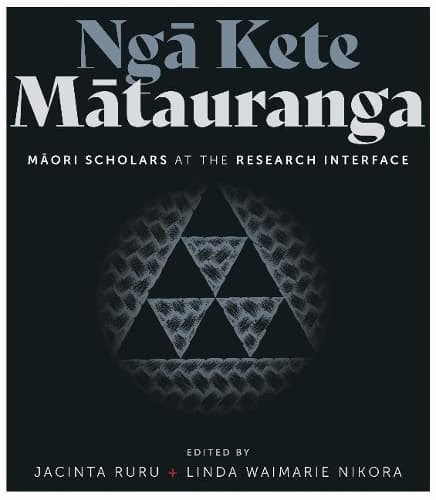Review: Ngā Kete Mātauranga: Māori scholars at the research interface
Reviewed by Atakohu Middleton
When the news came out in 2019, it was worse than we had anticipated: just 5 per cent of scholars in the universities of Aotearoa are Māori. That’s despite the numbers of Māori undergraduate students rising steadily since the 1990s and the Māori population, now at 16 per cent, going in only one direction – up, and fast.
I am one of that measly 5 per cent of Māori in academia; I started my post-PhD academic career a year ago. The result of so few Māori academics is that all students’ exposure to Māori ways of seeing, being and doing is limited. It means that Māori students see very few of their own in positions of influence in tertiary education, which has an influence on whether they choose to become academics themselves. Role models are important – you need to see it to think you can be it.
The under-representation of Māori means that there are few people to teach both students and colleagues about the value of mātauranga Māori, or Māori knowledge, in research, in the classroom and in solving the pressing problems facing our country.
This attractively illustrated book, then, is very welcome. It inspires by presenting the first-person, personal stories of 24 Māori academics working in Aotearoa. They describe, generally in engaging style, who they are and how they weave the integrated and holistic frameworks of mātauranga Māori into their research in areas as diverse as demography (Tahu Kukutai), management (Chellie Spiller), ecology (Shaun Ogilvie), geology (Dan Hikuroa), law (Māmari Stephens), astronomy (Rangi Matamua), film studies (Jani Wilson), physics (Ocean Ripeka Mercier van Berkel) and English (Alice Te Punga Somerville).
I know very few of these academics personally, but their stories remind me that I am not alone and that they have laid a lot of groundwork from which I will benefit. Anei a mihi ka rere, rangatira mā. They also speak of how they contribute to decolonising the academy – that is, making space for frames of reference beyond the standard ‘western’ approaches that may not value indigenous knowledge.
The book, which assumes some understanding of how the tertiary sector works, is preaching to the converted to an extent in relating success stories of Māori who have brought mātauranga Māori to the academy. But it is valuable to all who work in research as it provides many examples of how Māori and long-established research disciplines can usefully synthesise.
For example, Naomi Simmonds discusses how Māori geography exposes “the layers of colonial inscription on the land.” Dan Hikuroa’s “best research experience” was finding that one of the reasons for Ōkahu Bay’s depleted mauri (life force) were its boat moorings – they were polluting the seabed with zinc.
Meihana Durie discusses how kōrero pūrākau (ancient iwi and hapū narratives) encode critical knowledge. The story about Māui the trickster extracting fire from the fingernails of his grandmother Mahuika is more than a children’s story about the origin of fire – it bears important messages about environmental sustainability and reciprocity.
Nēpia Mahuika talks about the ways in which indigenous histories contest entrenched ideas that Aotearoa was colonised peacefully. As a final example, Chellie Spiller discusses how businesses are, increasingly, taking a steer from Māori values in focusing on intergenerational sustainability.
The book ends with an afterword summing up the book’s themes. In short, mātauranga Māori has great value to Aotearoa. However, researchers often face racism, isolation and the denigration of indigenous knowledge.
Despite the challenges, note the editors, there is reason for optimism, and Rangi Matamua sums up a common sentiment. “I look forward to the day,” he writes, “when we have a host of Māori astrophysicists, chemists, biologists and geologists, Māori in all scientific fields who have the ability to be comfortable with both the Western science and the cultural knowledge. This for me is the ultimate future for Māori within this space.”
Reviewed by Atakohu Middleton
